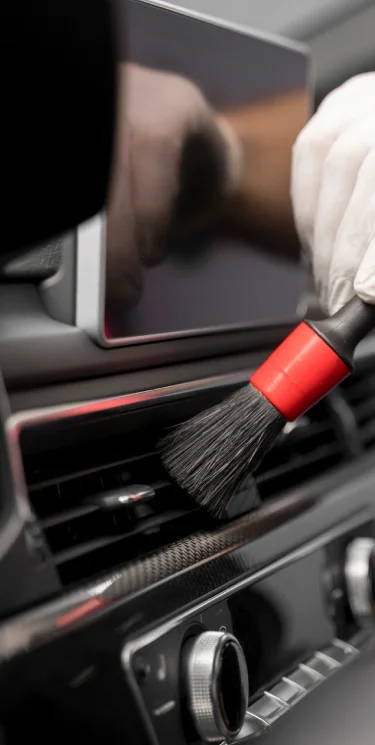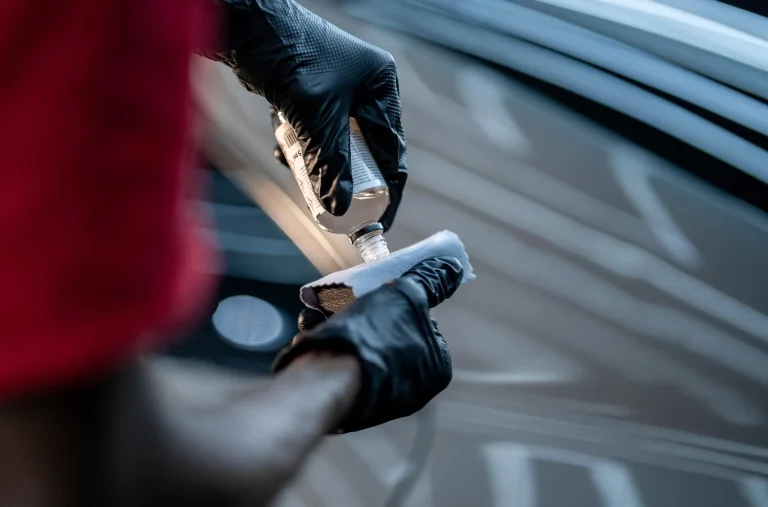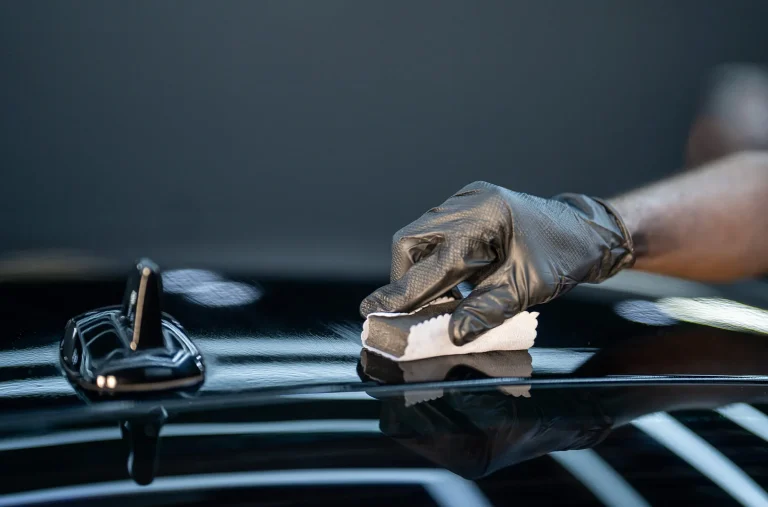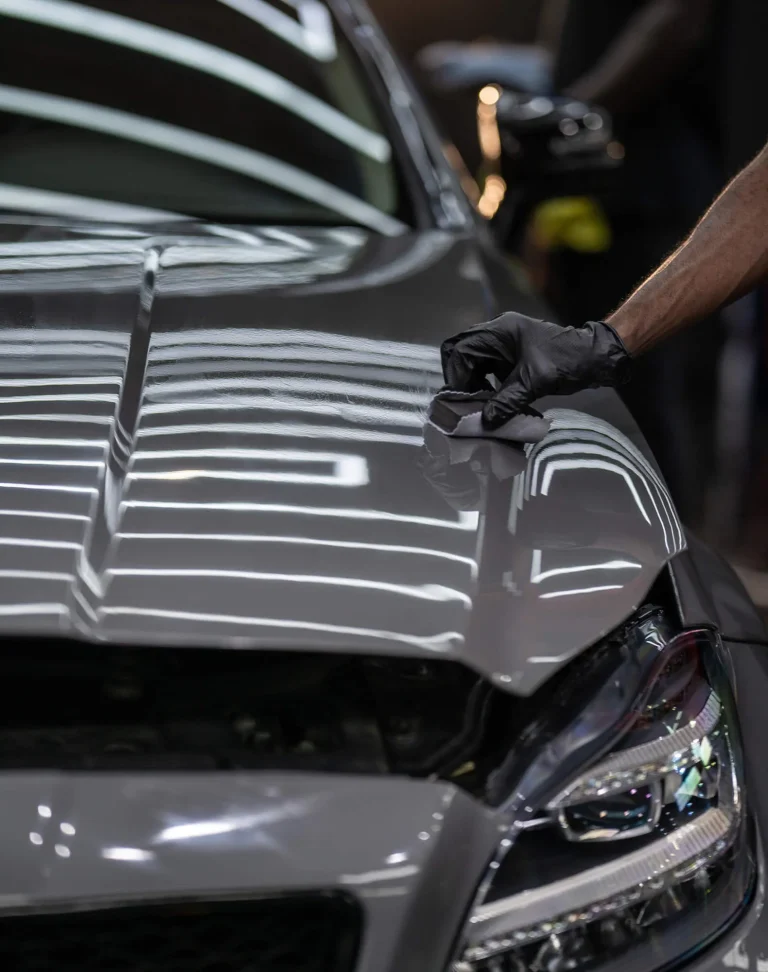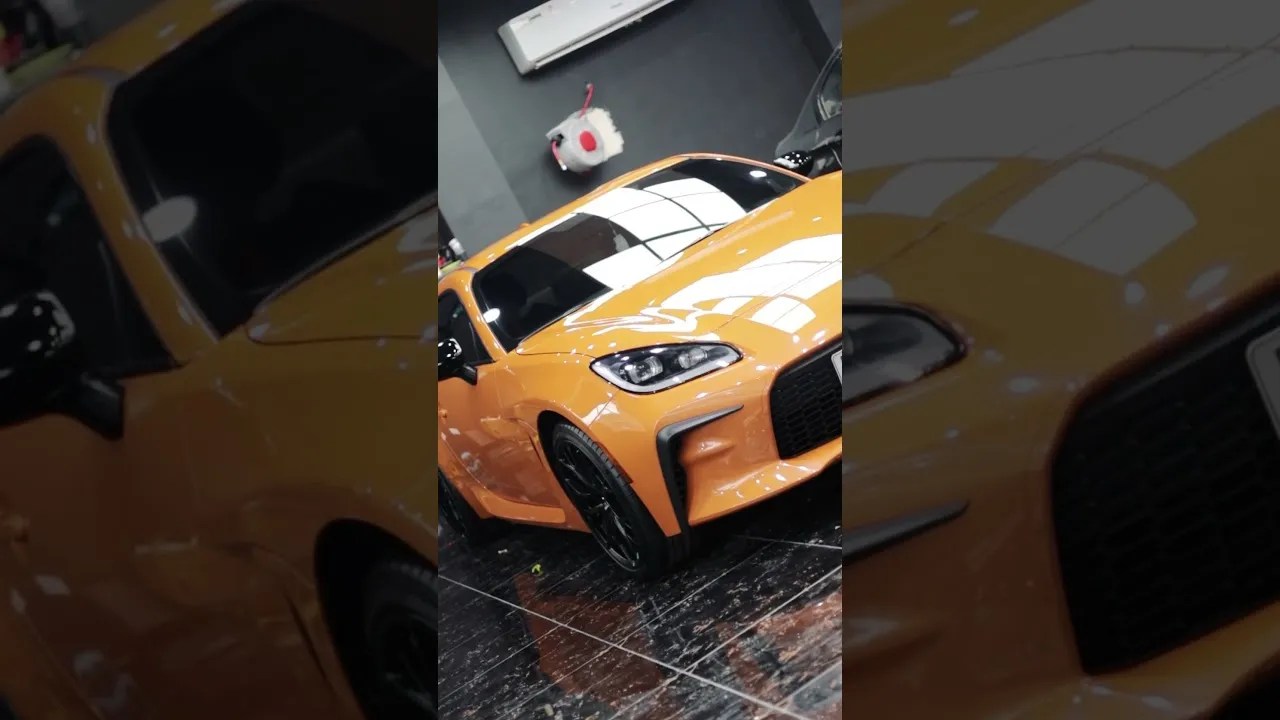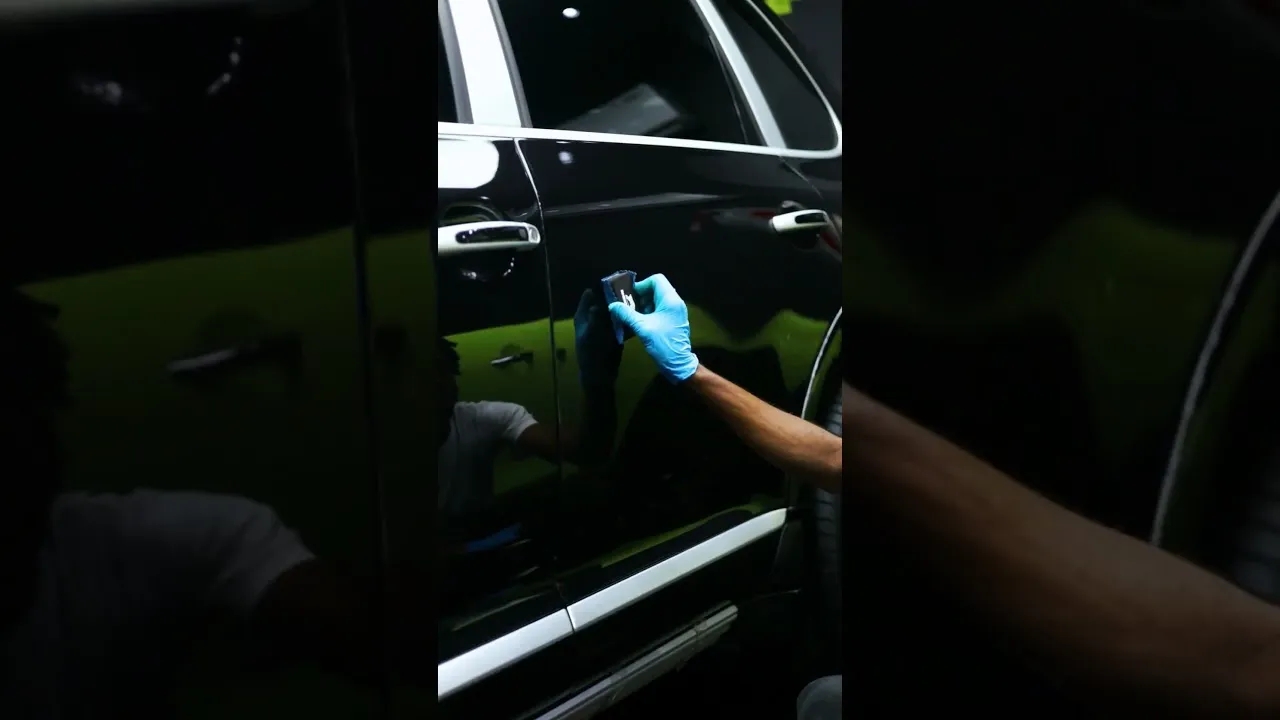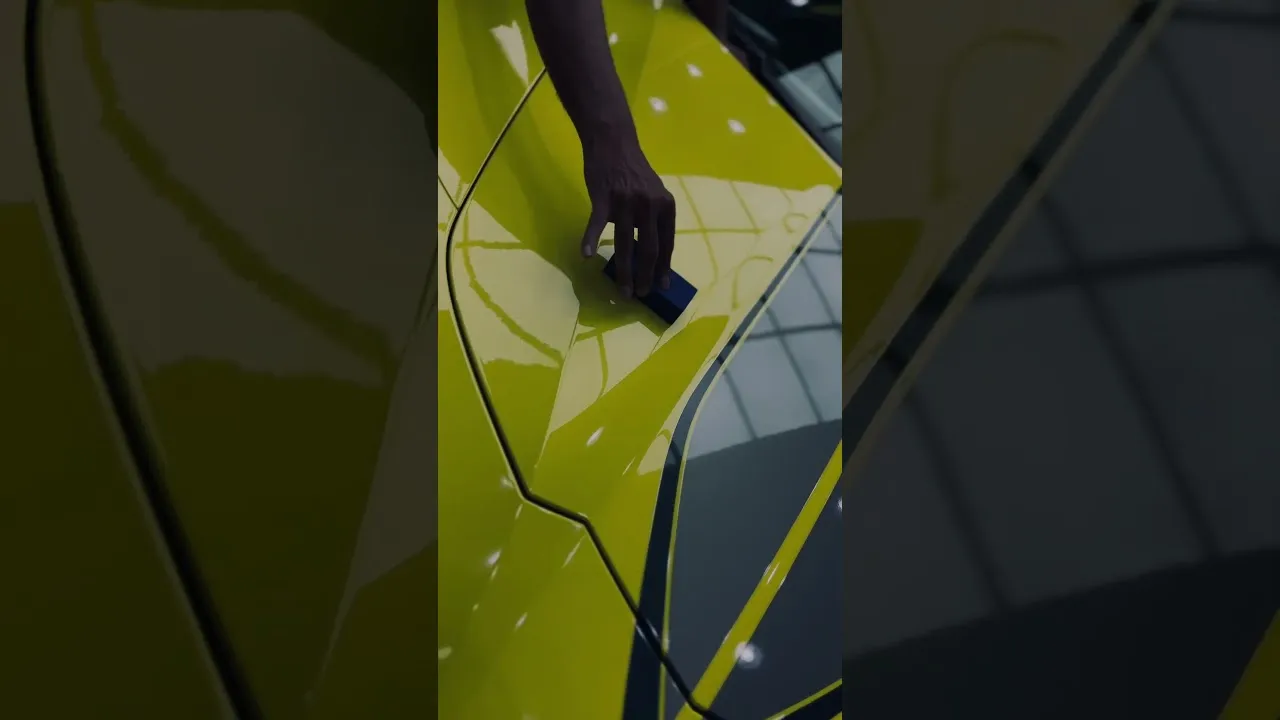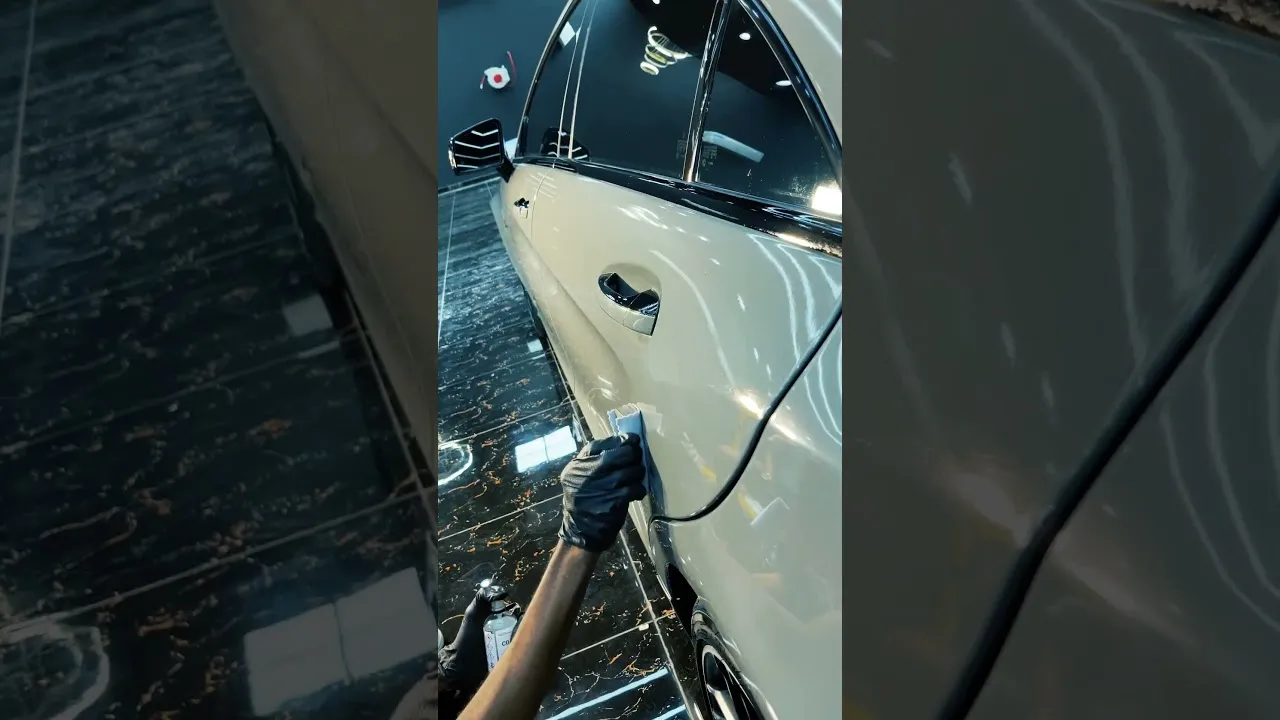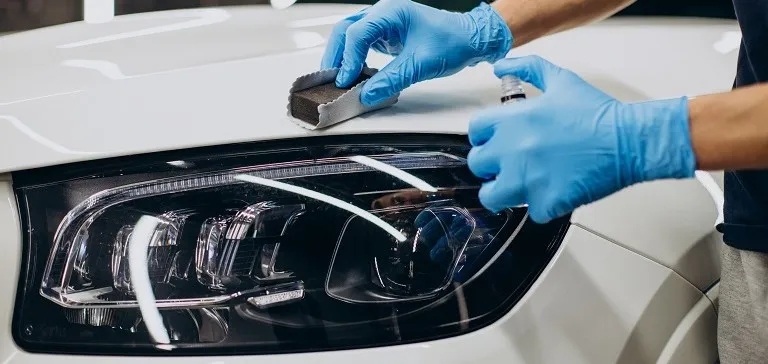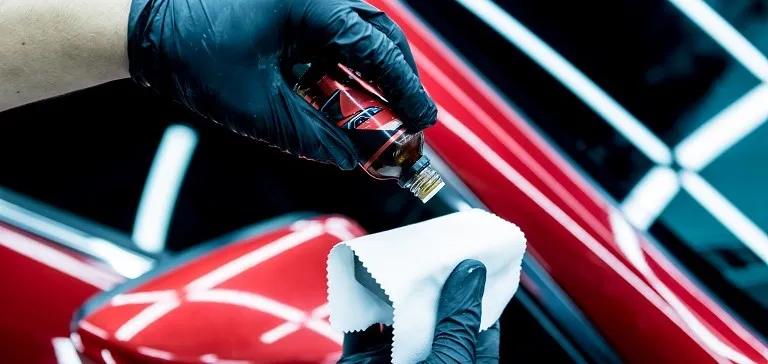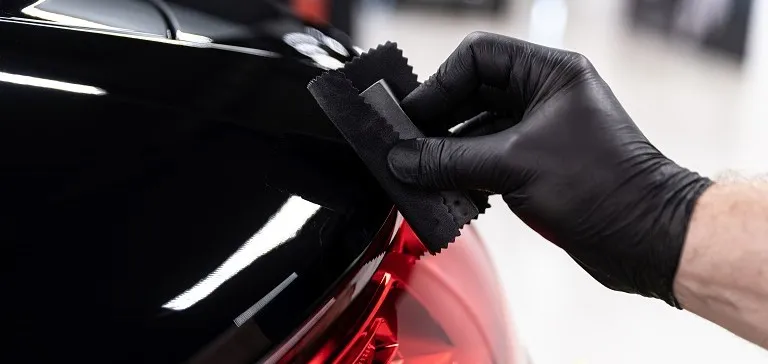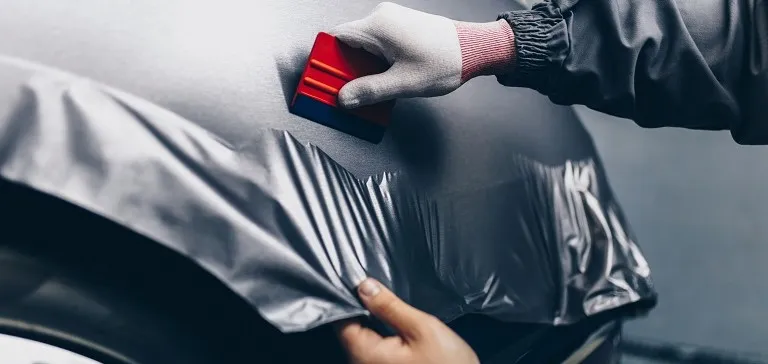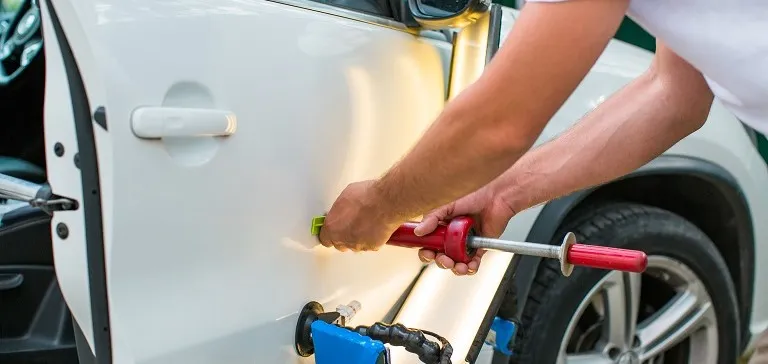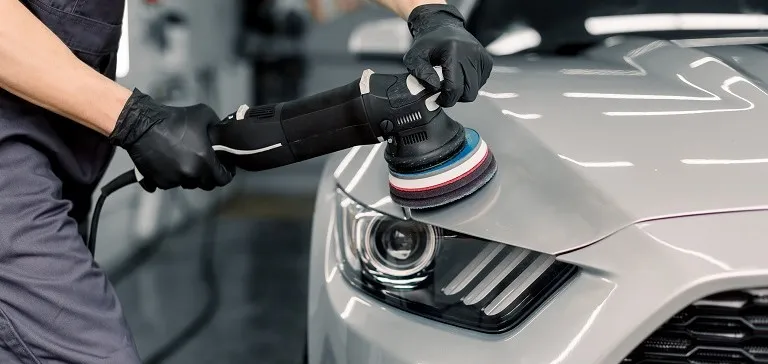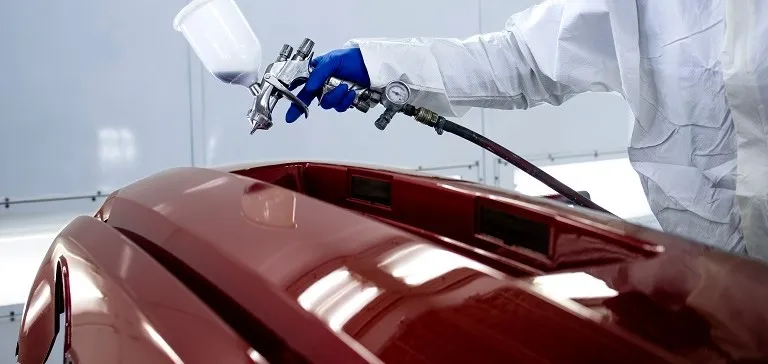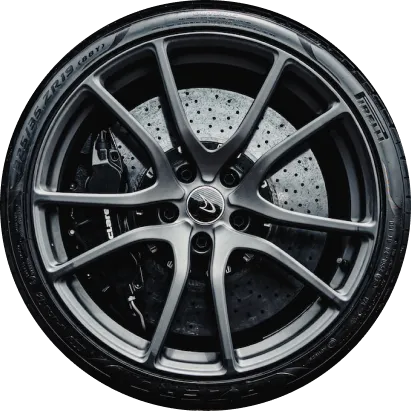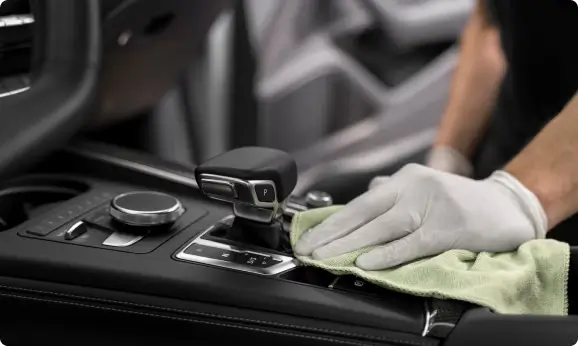In Dubai’s brutal climate, the immaculate look of your car can be a challenge. Ceramic coating has become the solution that many car enthusiasts and owners who wish to preserve their vehicles from the harmful UV rays, sand, etc. have chosen as the most adequate.
This guide covers everything about ceramic coating from its advantages, application steps, and whether it’s the right option for you or not.
What is Ceramic Coating?
Ceramic coating is a polymer that is applied in liquid form to the outside of a car. With ceramic coating, car paint will be resistant to wear and tear. Forming a chemical bond with the car’s original paint, nano ceramic coating acts as a solid shield, which enhances the car’s appearance while providing protection from various environmental factors. In contrast to conventional types of waxes and sealants, ceramic coating has longer durability and better performance.
How Ceramic Coating Works
Ceramic coating triggers the process of chemical reaction, which leads to a direct bonding of the coating to the vehicle paintwork. The fluid polymer creates a protective layer on the surface, but at the same time, it develops a hydrophobic barrier, which protects the car exterior from minor scratches, water spots, dirt, and other types of contaminants. It also enhances the paint’s depth and gloss – an effect that cannot be achieved by detail car wash.
Benefits of Ceramic Coating
Ceramic coating is a trending option in automobile detailing in Dubai. It is popular among car enthusiasts who want to boost their cars’ protection and appearance. This cutting-edge coat serves as complete protection that goes beyond the benefits offered by the usual waxing and sealing.
Protection against UV damage
Dubai’s bright sun rays can dramatically degrade the car’s characteristics and decrease its value, as they may lead to fading and oxidation. One of the advantages of ceramic coating is its ability to reflect the UV rays, thus protecting your car from color fading and premature aging and preserving its showroom shine.
Protection against chemical damage
Ceramic coating is not deformable to strong chemicals such as acid rain, bird droppings, and tree sap. Ceramic coating makes the paint scratch resistant, and the paint surface is not affected by any blemish.
Hydrophobic coating
Apart from the durability, the ceramic coating creates a hydrophobic layer on the car paint. Water is repelled, and the surface is cleaner. This makes your car’s maintenance less time-consuming and frequent since you will need a car wash less frequently.
Glossy outlook
The surface of your car’s paint can now be protected with a ceramic coating that gives it a new shine and depth.
To sum up, ceramic coating has lots of advantages, such as resistance to UV radiation, chemicals, and environmental pollutants. It has hydrophobic properties, thus it is easy to maintain and at the same time, the car looks good due to its glossy finish.
Types of Ceramic Coating
Ceramic coatings of various types have different strengths, and protection. The cheap variants are targeted at DIY users and provide basic protection while making the vehicle shiny to some extent.
A professional-grade nano ceramic coating, on the other hand, provides greater shine and durability. These coatings usually act as a shield against chemicals, UV rays, and hard environmental conditions for a long period.
Your unique needs and financial situation will determine which ceramic coating is best for you. Professional-grade coatings are better suited for people looking for the maximum level of safety and are ready to invest in skilled application, while entry-level alternatives are best for budget-conscious people who prefer a do-it-yourself approach.
Application and Maintenance
Application Process
Applying a nano ceramic coating involves several key steps.
Preparation
- Cleaning: Detailers will wash the vehicle thoroughly to remove all dirt and grime.
- Decontamination: Then, a clay bar is used to eliminate embedded particles.
- Paint Correction: scratches or imperfections on the paint surface will be removed.
Surface Inspection
- Drying: Detailers will wait till the car is completely dry.
- Inspection: Then, they will check the surface for any remaining contaminants.
Application
- Coating Preparation: The ceramic coating solution has to be shaken and then applied with an applicator pad.
- Application: The coating is applied in small sections, using a cross-hatch pattern for even coverage.
- Leveling: The excess product is wiped off with a clean microfiber towel.
Curing
- Initial Cure: The coating must cure in a dust-free environment as per manufacturer instructions.
- Final Cure: All additional curing instructions must be followed to achieve full hardness.
Inspection and Maintenance
- Final Inspection: After curing, the detailers must check if the applied coat is even.
- Maintenance: To maintain the coating’s effectiveness, all care guidelines must be followed.
These steps ensure a durable and glossy finish, enhancing your vehicle’s appearance and protection.
Maintenance and Upkeep
A nano ceramic coating needs some upkeep, even though it is low-maintenance. The effectiveness of the coating will be preserved with routine washings using pH-neutral auto soap and refraining from using harsh chemicals. The lifespan of the coating can also be increased with expert touch-ups and periodic examinations.
Practical Considerations
Cost and Application
Depending on the type of nano ceramic coating and the size of your car, this automobile detailing service can be a substantial expenditure. Professional application usually comes with a larger price tag, but it also guarantees better final quality and protection. It’s critical to assess the short- and long-term costs and take your vehicle’s particular requirements into account.
Limitations and Drawbacks
Although ceramic coating has numerous benefits, it is not a panacea. It might be expensive to apply, and it won’t make your car completely scratch resistant: it does not protect your automobile from rock chips or tough scratches. Furthermore, poor application or upkeep may have an impact on its durability and efficacy.
Comparison to Other Protective Coatings
It’s crucial to weigh the pros and cons of ceramic coating against the other protective coating options before selecting one for your car. This is a thorough analysis contrasting ceramic coating with conventional sealants, waxes, and paint protection films (PPF).
Traditional Waxes
Conventional waxes provide a glossy sheen and a minimal degree of protection. They can improve the car’s gloss and are very simple to apply (all you need is just microfiber cloth), but they don’t offer as much protection as ceramic coatings.
Because of the weather conditions and frequent cleaning, waxes usually need to be reapplied every few months because they fade off very quickly. They fall short of ceramic coatings in terms of durability, chemical resistance, and UV protection.
Sealants
Paint sealants create a synthetic barrier on the surface of the original paint, offering greater long-lasting protection than waxes. They provide superior resistance to UV radiation and chemical pollutants, and they stay longer, often up to six months.
They still can’t match the durability and effectiveness of ceramic coatings, though. While sealants offer a good degree of gloss, they are less efficient than ceramic coatings in terms of achieving a deep, reflecting finish. For them to continue working, they also need to be reapplied quite often.
Paint Protection Films (PPF)
In contrast to ceramic coating, car paint protection films work differently. PPFs are transparent, self-healing films that are applied to a car’s exterior to prevent physical damage, including chips, scratches, and small abrasions.
They offer superior physical defense and have the potential to outlast ceramic coatings in terms of impact resistance. PPFs can be more expensive and noticeable, which could change how the car looks. For optimal fit and adherence, professional installation is also necessary.
Ceramic Coatings
Ceramic coatings are unique because of their cutting-edge technology and enduring advantages. They produce a strong, hydrophobic barrier that deters impurities, dirt, and water, simplifying cleaning and lowering the need for frequent washings.
Ceramic coatings provide excellent UV protection, reducing the likelihood of paint oxidation and fading over time. They offer a high-gloss finish that improves the vehicle’s appearance and are resistant to harsh chemicals and environmental toxins.
In the long term, ceramic coatings are more affordable than waxes and sealants since they can endure for several years with the right care.
In summary, while traditional waxes and sealants provide some level of protection and shine, they require more frequent reapplication and offer less durability. Paint protection films offer robust physical protection but come with higher costs.
Ceramic coatings, on the other hand, provide exceptional protection, longevity, and appearance enhancement, making them a superior choice for those seeking long-term care for their car’s paint.
Is Ceramic Coating Right for You?
Ceramic coating is an excellent choice for car owners in Dubai who seek long-lasting protection and a high-gloss finish. If you’re willing to find the best nano ceramic coating and invest in professional application, ceramic coating can significantly enhance your vehicle’s appearance and longevity.
Consider your budget, vehicle usage, and personal preferences when deciding if ceramic coating is the right solution for you.

